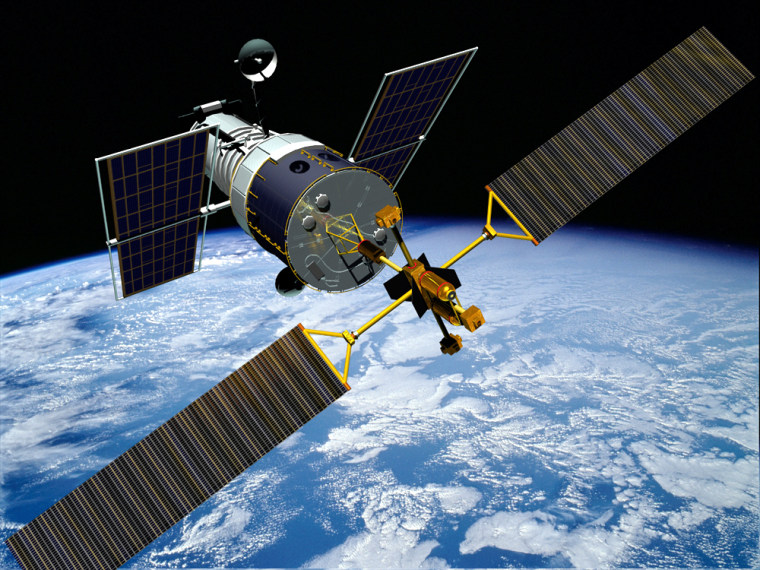NASA is reviewing over two dozen proposals for extending the useful scientific life of the Hubble Space Telescope, as well as safely disposing of the Earth-orbiting observatory at the end of its life in space.
There is growing support for robotic servicing of the Hubble — but it's still debatable whether the telescope can be augmented with new astronomical gear utilizing robot hardware.
NASA’s Goddard Space Flight Center in Greenbelt, Md., is now reviewing ideas from a variety of groups, including university and major aerospace firms. According to Space.com sources, Goddard has received 27 proposals ranging from a few pages to a 200-page tome from a leading aerospace firm.
The proposals are in response to a Goddard "Request for Information" on Hubble Space Telescope End of Mission Alternatives in February, with the NASA center receiving the proposals March 22. At present, a review of submitted ideas and discussions with proposal groups are actively under way.
NASA spokesman Don Savage told Space.com that the request resulted in ideas from mostly industry, but did include views from other government agencies, academia, as well as a private citizen. Savage said that the ideas are now being evaluated.
However, while the submittals are now being reviewed, any go-ahead on a robotic servicing scheme for Hubble is far from assured.
Robots and the exploration agenda
At the core of extending Hubble operations is just how robust methods and technologies are at this point to carry out a robotic servicing mission. Such firms as Lockheed Martin and Ball Aerospace are among teams scoping out how best to extend the life of Hubble.
According to one aerospace executive source, the robotic servicing of Hubble fits in well with NASA’s plans for the moon, Mars and beyond — in terms of pushing forward wider use and adoption of robots for exploration beyond Earth orbit.
At Goddard, an internal panel of experts is assessing the feasibility of telerobotically changing out Hubble astronomical instruments. Also, an attachable package of batteries and gyroscopes that can be mounted on Hubble, done via robotic servicing, is being considered.
The look at how best to extend Hubble’s useful scientific life has been spurred by a NASA decision to cancel a June 2006 servicing mission by astronauts to the space-based telescope. Furthermore, the observatory’s retrieval by a space shuttle at the end of its mission is no longer an option, according to the space agency.
In making those judgments, NASA Administrator Sean O’Keefe has become a lightning rod for political and public criticism. NASA policy requires the safe disposal of the Hubble Space Telescope. As the eye on the universe whirls about Earth, it is now headed for an uncontrolled re-entry into Earth’s atmosphere no earlier than the year 2013.
At present, Hubble’s projected battery life is the principal limiting factor for overall observatory lifetime. It is expected that the telescope will not be totally stationary in inertial space at the end of its useful life in orbit.
Dump or boost?
NASA's plan is to maximize Hubble's scientific productivity through the remainder of the mission by extending its useful productive lifetime and sustaining its unique scientific capabilities as long as possible.
Once the Hubble science program is no longer viable, the plan is to either dump the facility in a controlled manner into the ocean or boost the observatory to a safe parking orbit — over 1,550 miles (2,500 kilometers) above Earth.
To do so requires use of a still-to-be-built propulsion module that would be attached to Hubble.
In this scenario, the propulsion stage would be lofted on an expendable launch vehicle. It would then rendezvous, capture, and dock with the space telescope. Once those actions are complete, the telescope can be nudged into a controlled re-entry or boosted to the higher safe parking orbit.
According to a Goddard document, there may be advantages to performing the deorbit or orbit boost immediately after the completion of science operations, which could be as early as 2007 or 2008.
